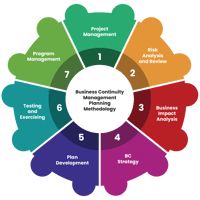eBook 2: Chapter 9
Summary of the Business Continuity Management Planning Methodology for the Singapore Institute of Technology (SIT)
Introduction
![[C9] Summary](https://no-cache.hubspot.com/cta/default/3893111/9e5f7b73-8827-42b4-b5b2-769d4170c7e4.png)
 The Singapore Institute of Technology (SIT), as Singapore’s fifth autonomous university, is dedicated to nurturing industry-ready graduates through applied learning and strategic partnerships with industry.
The Singapore Institute of Technology (SIT), as Singapore’s fifth autonomous university, is dedicated to nurturing industry-ready graduates through applied learning and strategic partnerships with industry.
As an institution that balances academic excellence with real-world relevance, SIT recognises the critical importance of ensuring uninterrupted learning, teaching, research, and administrative functions — even in times of crisis.
This eBook, “Safeguarding Learning Continuity: The Business Continuity Management Journey of the Singapore Institute of Technology,” documents SIT’s comprehensive approach to implementing an ISO 22301-aligned Business Continuity Management System (BCMS).
The second volume, “Implementing Business Continuity Management for the Singapore Institute of Technology (SIT),” focuses on the structured methodology adopted to safeguard learning continuity and operational resilience.
The Business Continuity Management (BCM) Planning Methodology described in this volume comprises seven interrelated phases:
 Project Management (PM)
Project Management (PM)- Risk Analysis and Review (RAR)
- Business Impact Analysis (BIA)
- Business Continuity Strategy (BCS)
- Plan Development (PD)
- Testing and Exercising (TE)
- Program Management (PgM)
Each phase contributes to building a robust and sustainable BCMS that not only meets compliance with ISO 22301 but also supports SIT’s mission of integrating learning, industry, and community to foster resilience in education delivery.
Summary of the Seven Phases
1. Project Management (PM)
The Project Management phase establishes the foundation of SIT’s BCM initiative. This includes defining the project’s objectives, scope, governance, and resource allocation.
A cross-functional BCM Steering Committee is typically formed to oversee project execution and ensure alignment with SIT’s strategic priorities.
Through structured planning and stakeholder engagement, the Project Management phase ensures clear accountability and direction throughout the BCM journey.
2. Risk Analysis and Review (RAR)
During the Risk Analysis and Review phase, SIT identifies and assesses risks that may disrupt its academic and operational functions.
This includes evaluating threats such as cyber incidents, health emergencies, infrastructure failures, and technology disruptions.
The outcome of this phase is a comprehensive understanding of vulnerabilities across SIT’s critical functions — from academic programme delivery and digital learning to student administration and research partnerships — forming the basis for resilience planning.
3. Business Impact Analysis (BIA)
The Business Impact Analysis determines the potential effects of disruptions on SIT’s critical business functions. This involves identifying time-sensitive activities, dependencies (both internal and external), and acceptable downtime thresholds.
The BIA outcomes help SIT prioritise recovery efforts and establish Recovery Time Objectives (RTOs) and Recovery Point Objectives (RPOs) to ensure that essential educational services, such as online learning platforms and student support systems, can resume within defined timelines.
4. Business Continuity Strategy (BCS)
In the Business Continuity Strategy phase, SIT evaluates and selects appropriate strategies to maintain or recover operations in the event of disruptions.
Strategies may include implementing remote learning solutions, establishing alternative facilities, strengthening IT redundancy, and ensuring continuity of faculty and student communications.
The chosen strategies strike a balance between cost-effectiveness and operational practicality, aligning with SIT’s educational mission and resource capabilities.
5. Plan Development (PD)
The Plan Development phase translates strategic decisions into actionable continuity and recovery procedures.
Detailed Business Continuity Plans (BCPs) are created for each critical business function, outlining activation procedures, communication protocols, escalation paths, and recovery workflows.
SIT’s plans ensure that staff, faculty, and students understand their roles during a disruption and that response coordination remains effective across departments.
6. Testing and Exercising (TE)
This phase validates the effectiveness of SIT’s business continuity strategies and plans.
Through structured exercises — such as tabletop simulations, communication drills, and scenario-based tests — SIT evaluates its readiness and identifies areas for improvement.
Regular testing reinforces preparedness and ensures that the university community remains confident in its ability to respond to and recover from adverse events.
7. Program Management (PgM)
The Program Management phase ensures the continuous improvement and sustainability of the BCM program.
It involves establishing governance frameworks, performance monitoring mechanisms, and regular reviews to maintain relevance and alignment with SIT’s evolving risk landscape.
Program Management also embeds a culture of resilience within the institution by promoting ongoing awareness, training, and integration of BCM into strategic and operational planning.

The Business Continuity Management Planning Methodology implemented at the Singapore Institute of Technology represents a structured and proactive approach to safeguarding learning continuity.
By systematically progressing through the seven phases — from initiation to continual improvement — SIT has established a resilient operational framework that supports its academic mission, meets stakeholder expectations, and ensures compliance with ISO 22301 standards.
SIT’s BCM journey exemplifies how an educational institution can integrate business continuity into its culture, governance, and day-to-day operations.
Beyond compliance, it demonstrates a commitment to ensuring that disruptions, whether digital, environmental, or societal, do not compromise the quality and delivery of learning.
As SIT continues its path forward, its BCM framework serves as both a model and a commitment—a promise that the learning journey of every student, the dedication of every faculty member, and the university's mission will remain resilient in the face of uncertainty.




![BCM E2 PM [Summary to BCM Planning Methodology] Banner](https://blog.bcm-institute.org/hs-fs/hubfs/BCM%20E2%20Blog%20Banner/BCM%20E2%20PM%20%5BSummary%20to%20BCM%20Planning%20Methodology%5D%20Banner.png?width=750&height=150&name=BCM%20E2%20PM%20%5BSummary%20to%20BCM%20Planning%20Methodology%5D%20Banner.png)
![[C1] Business Continuity Management Planning Methodology](https://no-cache.hubspot.com/cta/default/3893111/bc2f0e17-2827-4ce0-9a06-7c05434314fc.png)
![[C2] Project Management](https://no-cache.hubspot.com/cta/default/3893111/3a311fa3-a1b1-47e6-b10d-af447cd88e02.png)
![[C3] Risk Analysis and Review](https://no-cache.hubspot.com/cta/default/3893111/b9faa4ef-9c43-4215-a838-b89bf6160dca.png)
![[C4] Business Impact Analysis](https://no-cache.hubspot.com/cta/default/3893111/8bc06236-91b5-4298-b94f-a3edd5816628.png)
![[C5] Business Continuity Strategy](https://no-cache.hubspot.com/cta/default/3893111/ff7d5c03-a93b-4131-b673-f997d6592d89.png)
![[C6] BCM Plan Development](https://no-cache.hubspot.com/cta/default/3893111/052950a1-b690-4303-87b6-7848f69f2513.png)
![[C7] Testing and Exercising](https://no-cache.hubspot.com/cta/default/3893111/e4fcdf0f-e927-488f-baa8-4564c74bda78.png)
![[C8] Program Management](https://no-cache.hubspot.com/cta/default/3893111/625627a6-2a06-46dd-ab95-e84e8c2ed22e.png)
![[C10] Back Cover for BCM](https://no-cache.hubspot.com/cta/default/3893111/f23b8be6-b8e3-46cf-816c-2f5de1541220.png)


![Register [BL-B-3]*](https://no-cache.hubspot.com/cta/default/3893111/ac6cf073-4cdd-4541-91ed-889f731d5076.png)



![FAQ [BL-B-3]](https://no-cache.hubspot.com/cta/default/3893111/b3824ba1-7aa1-4eb6-bef8-94f57121c5ae.png)
![Email to Sales Team [BCM Institute]](https://no-cache.hubspot.com/cta/default/3893111/3c53daeb-2836-4843-b0e0-645baee2ab9e.png)





